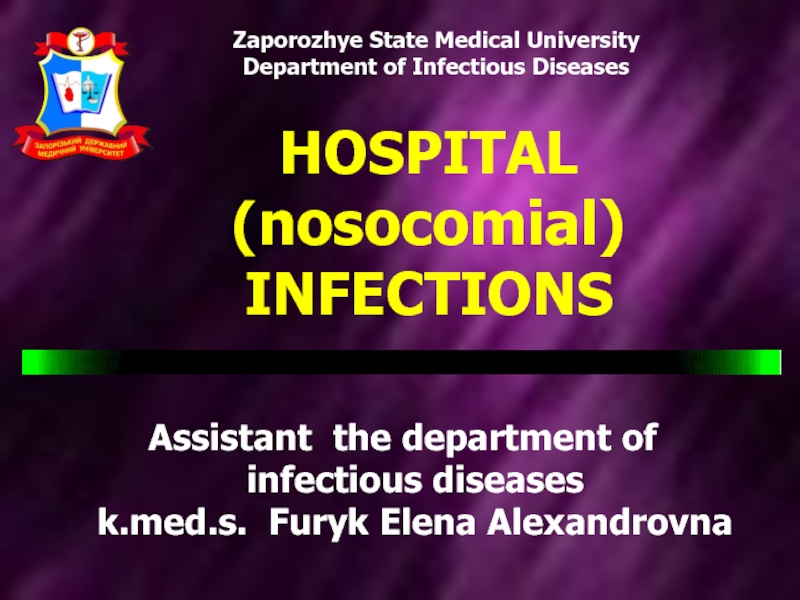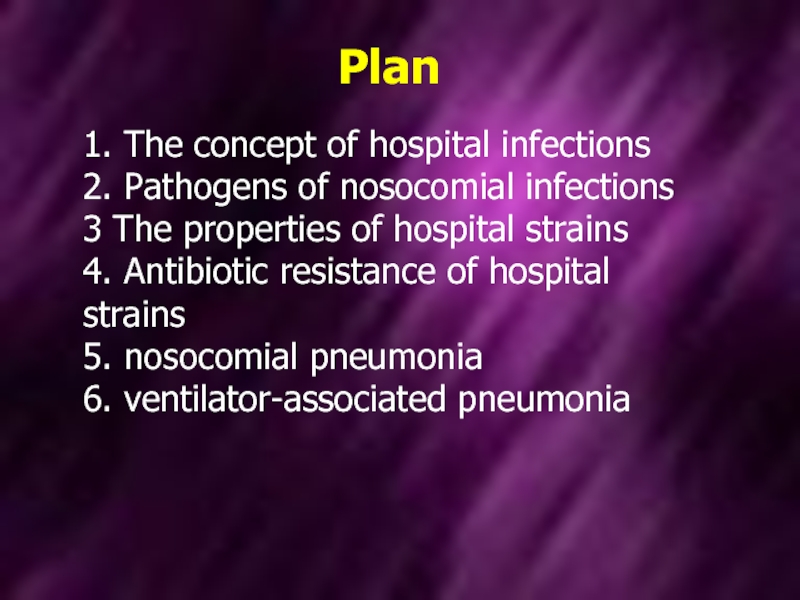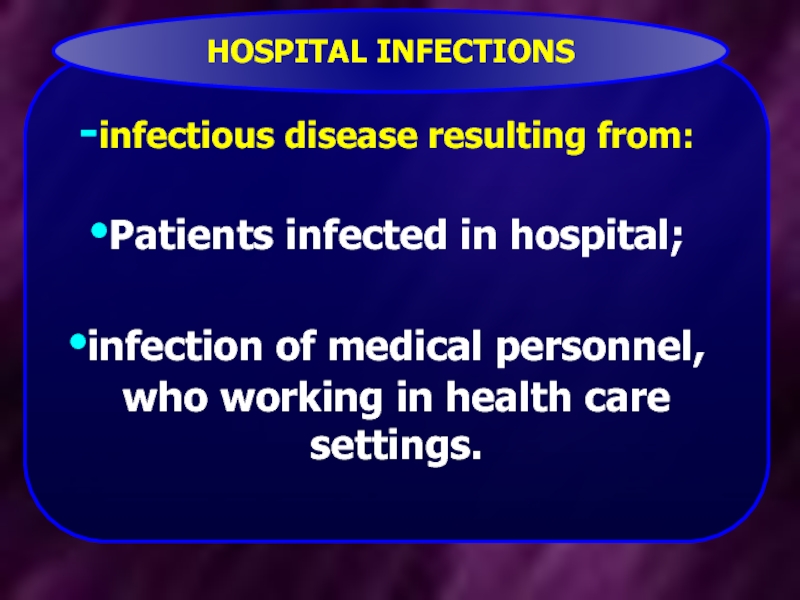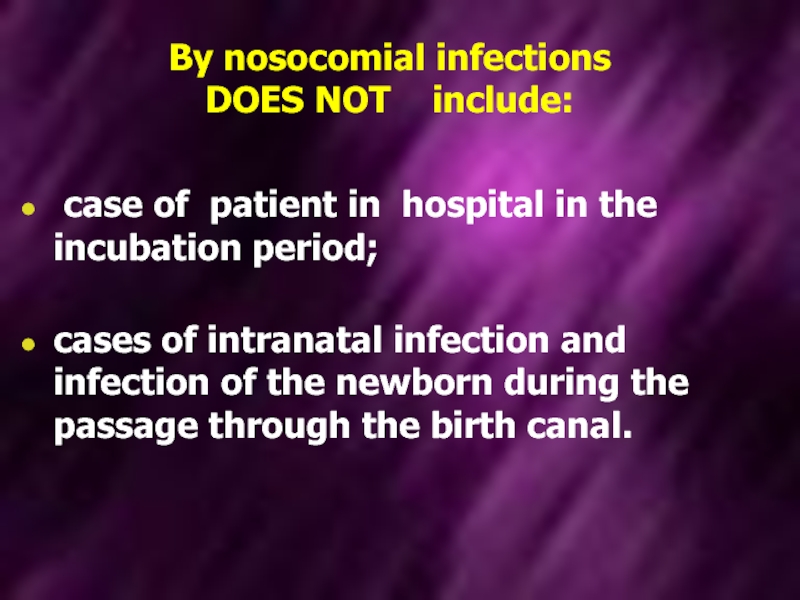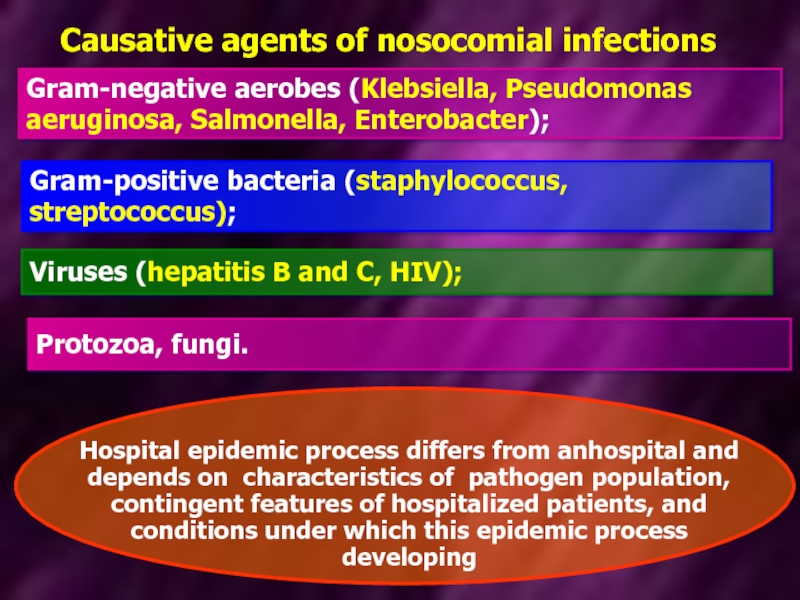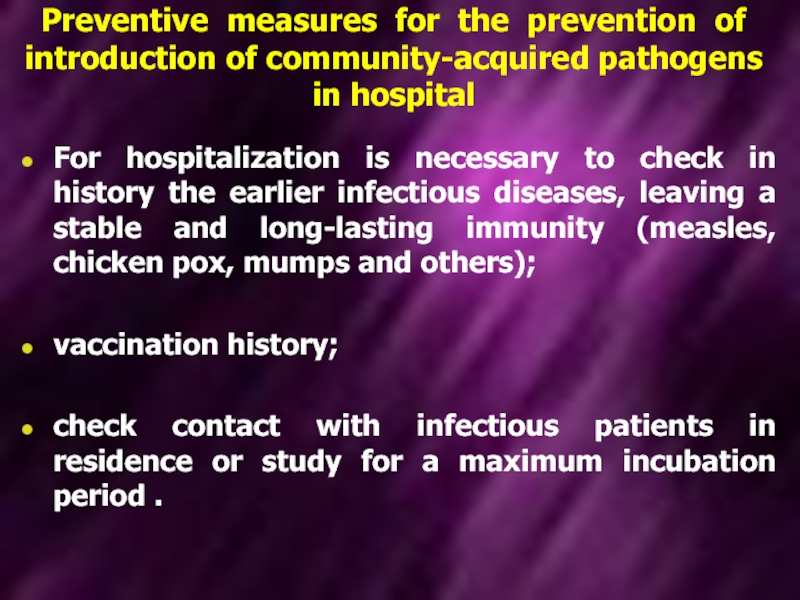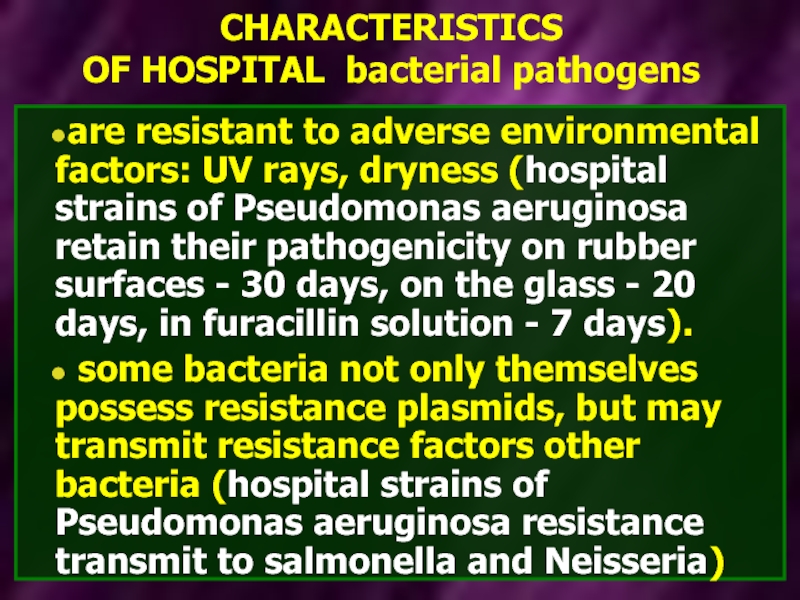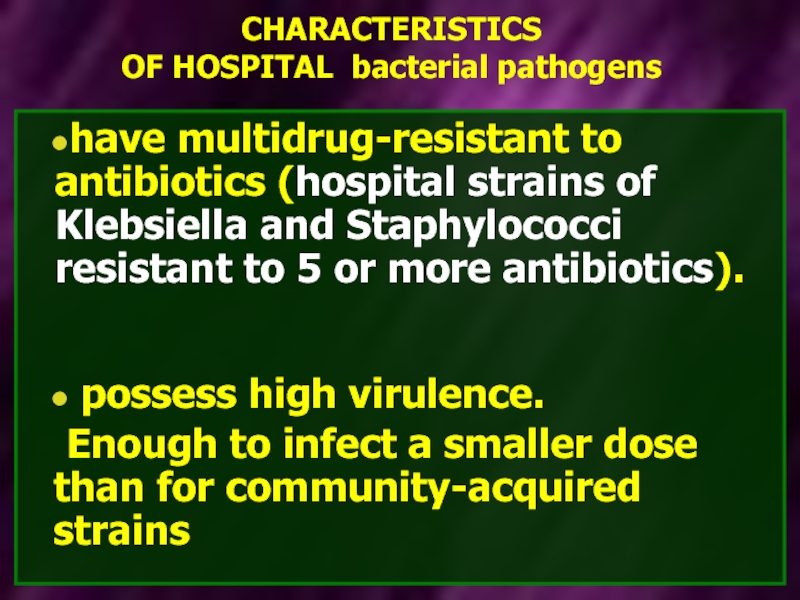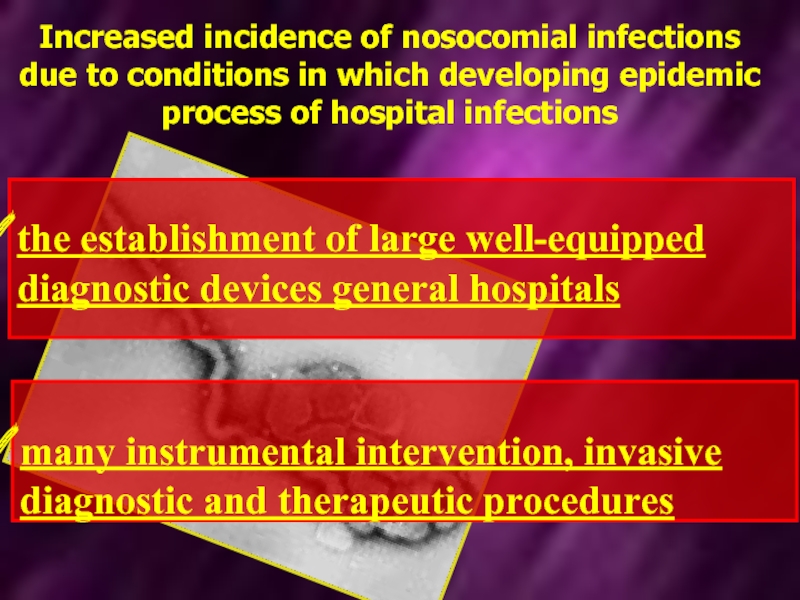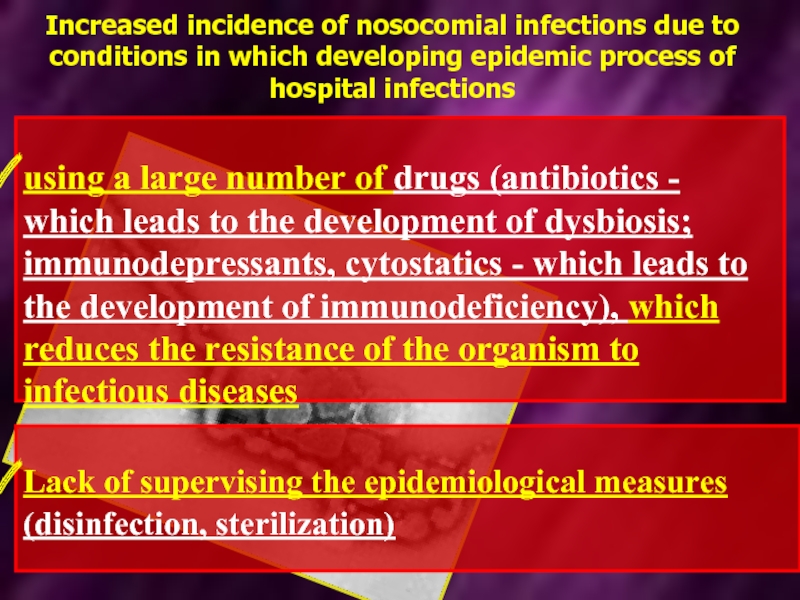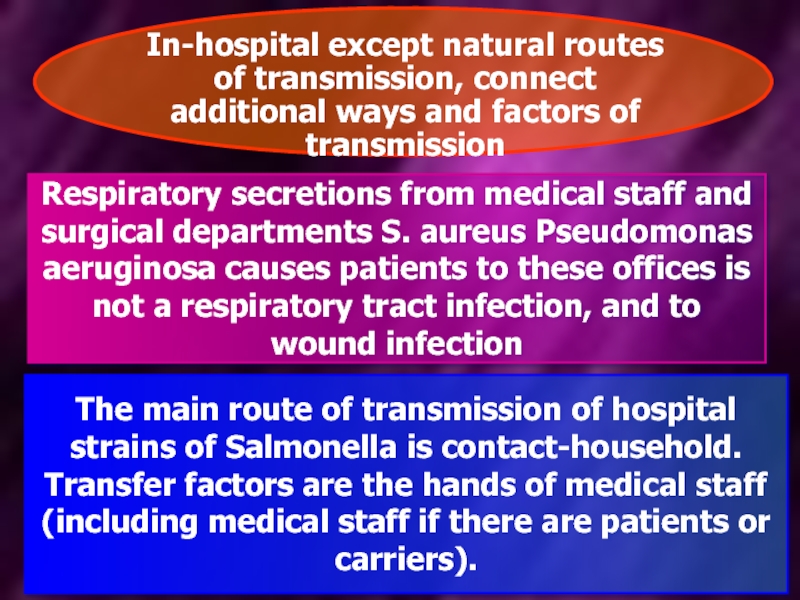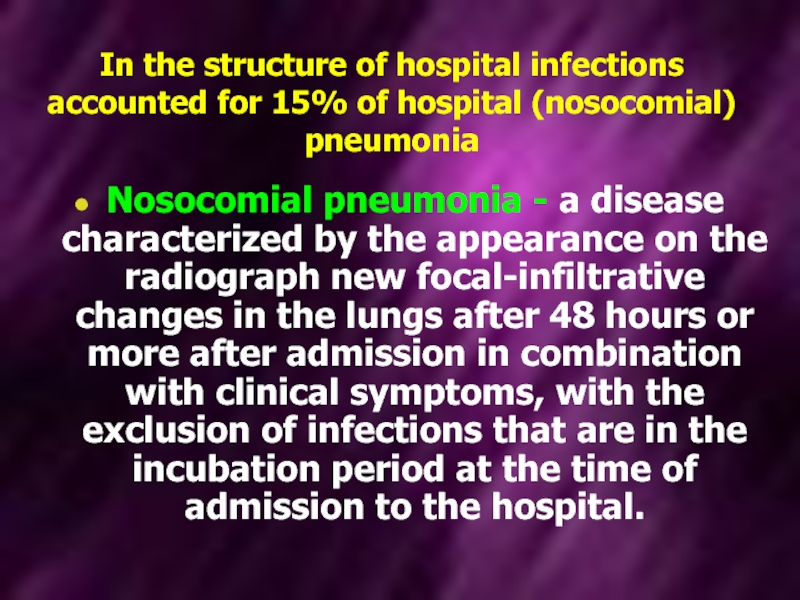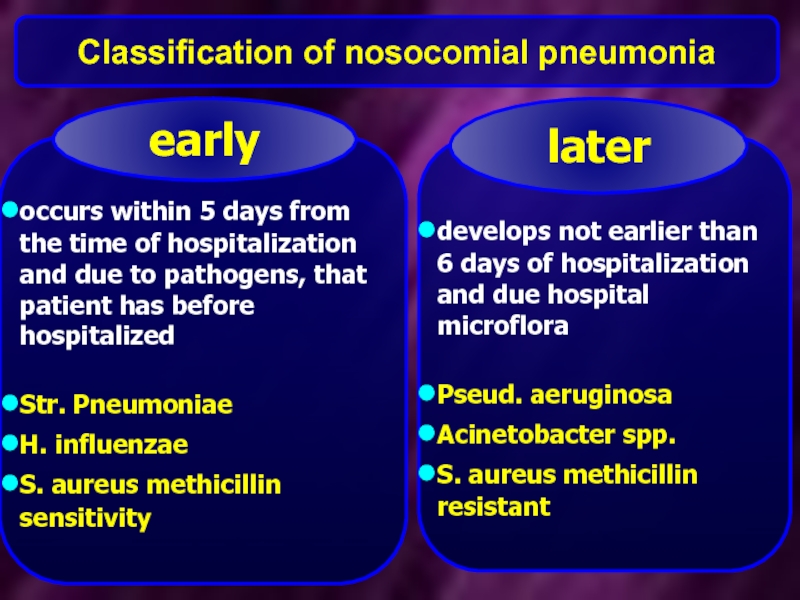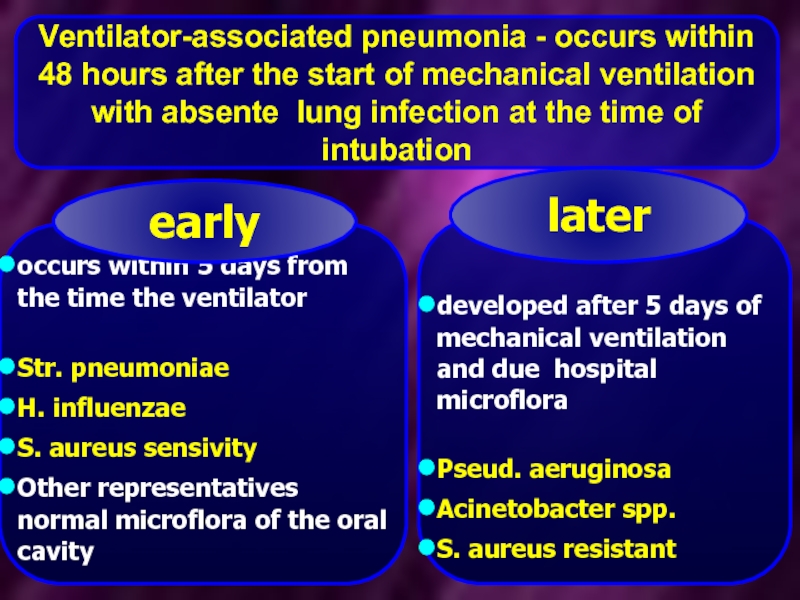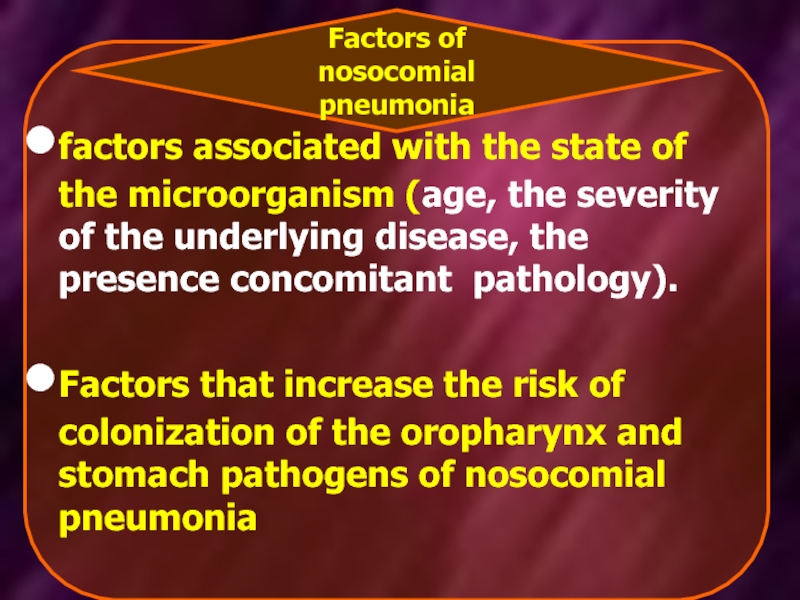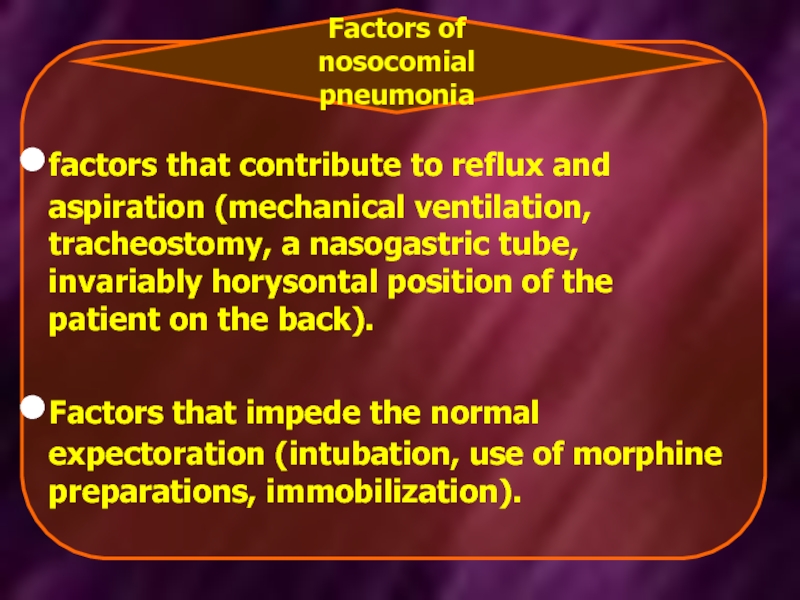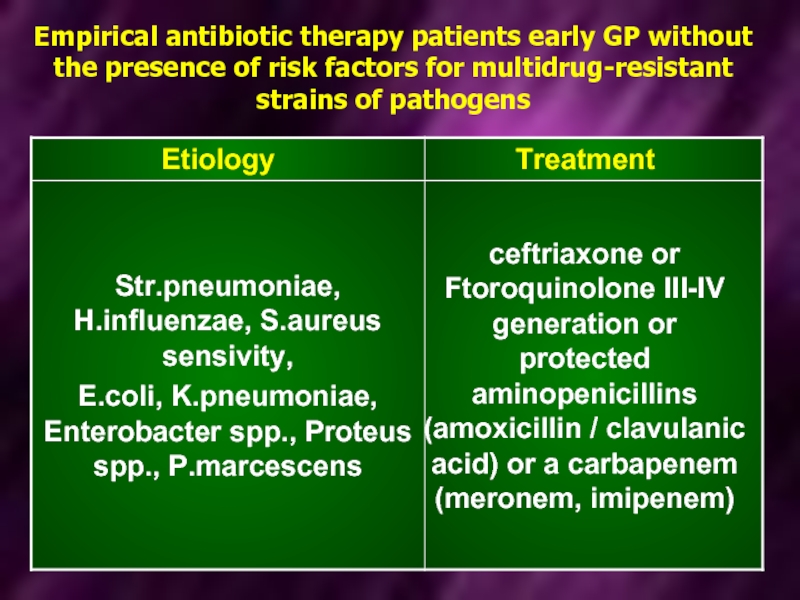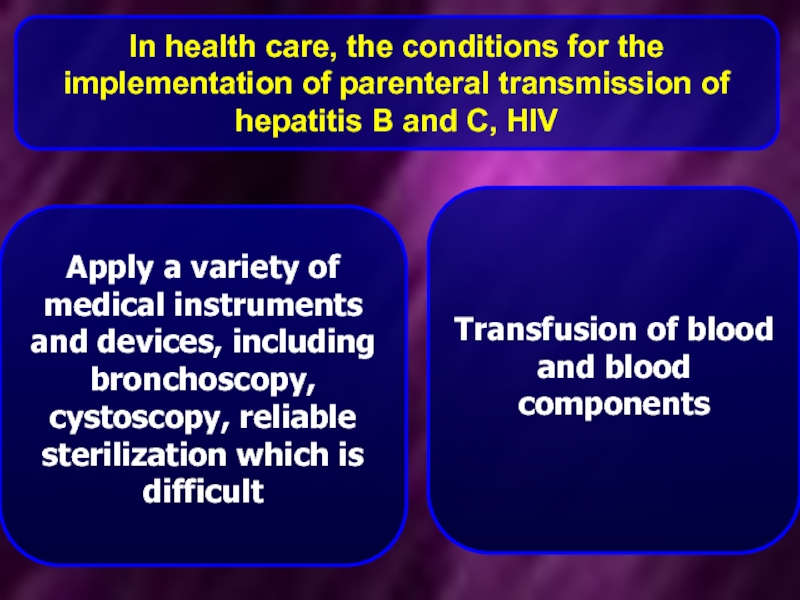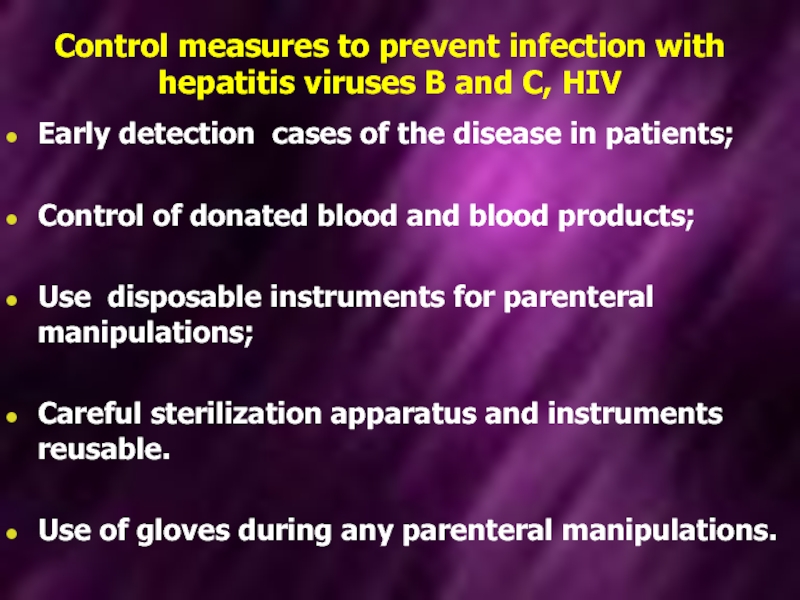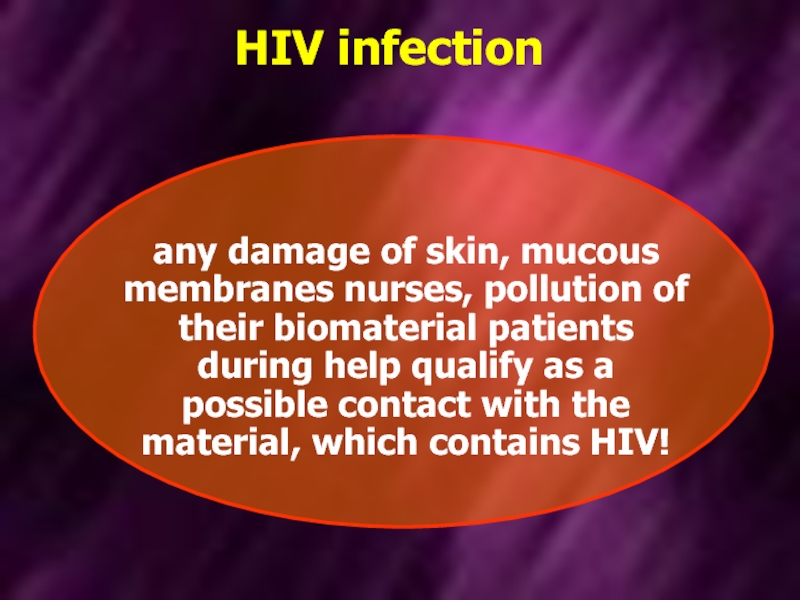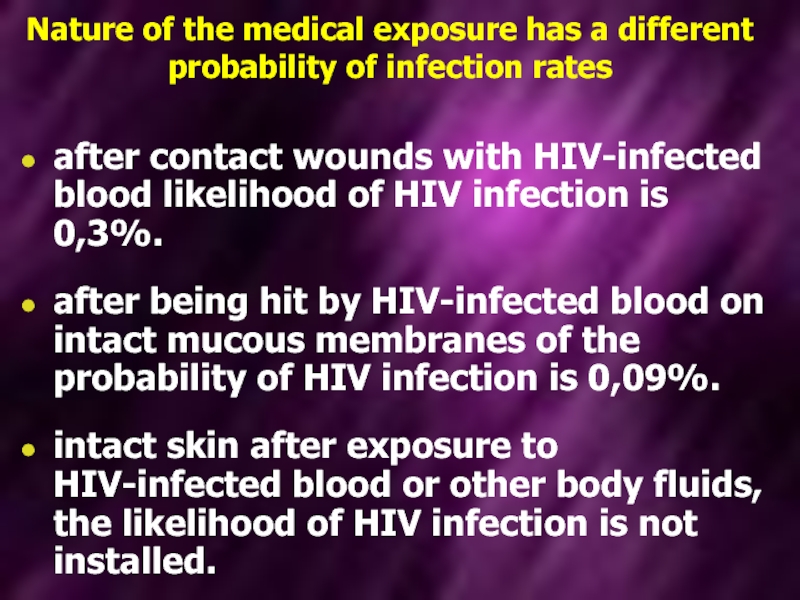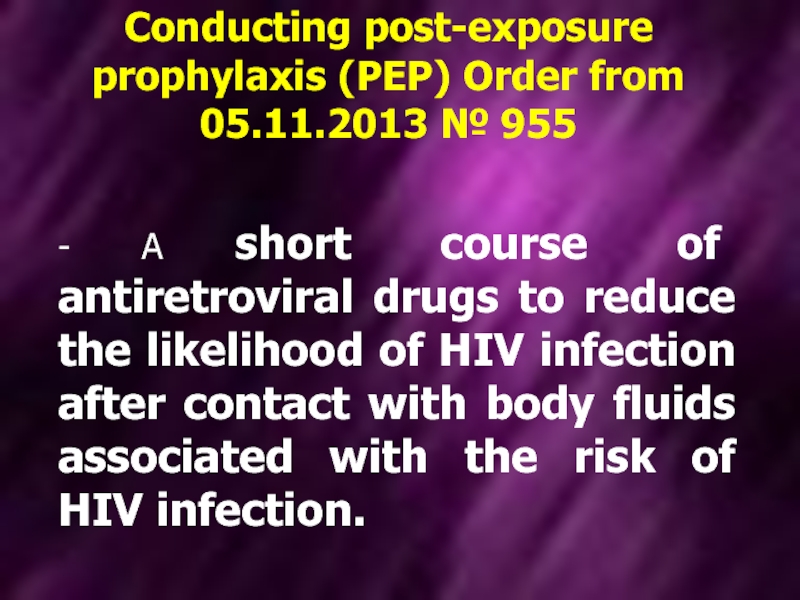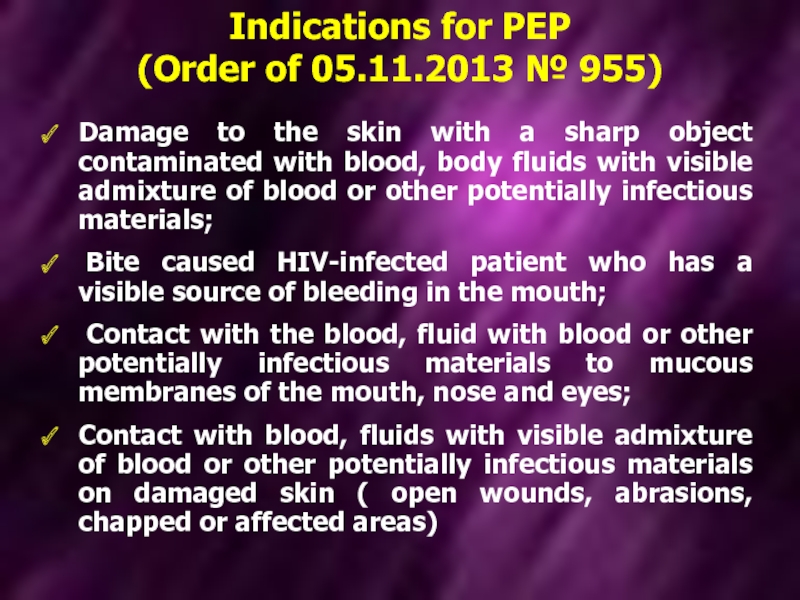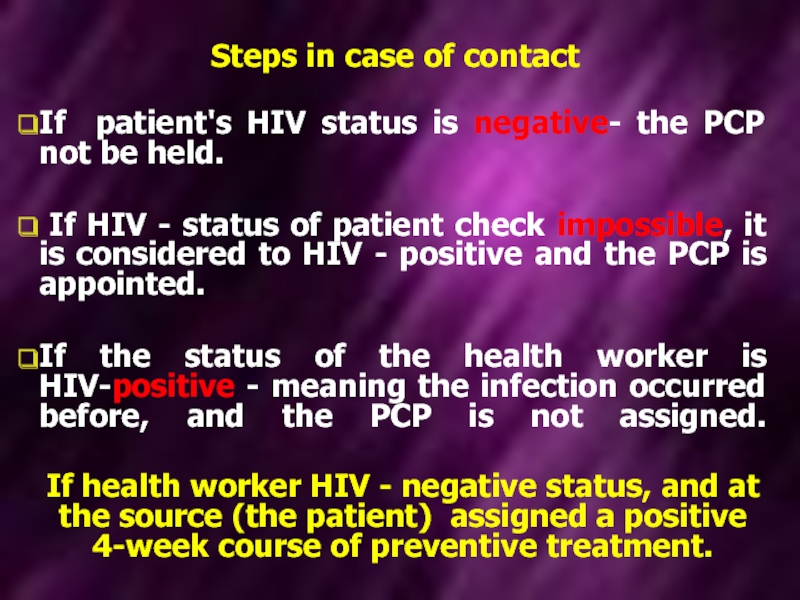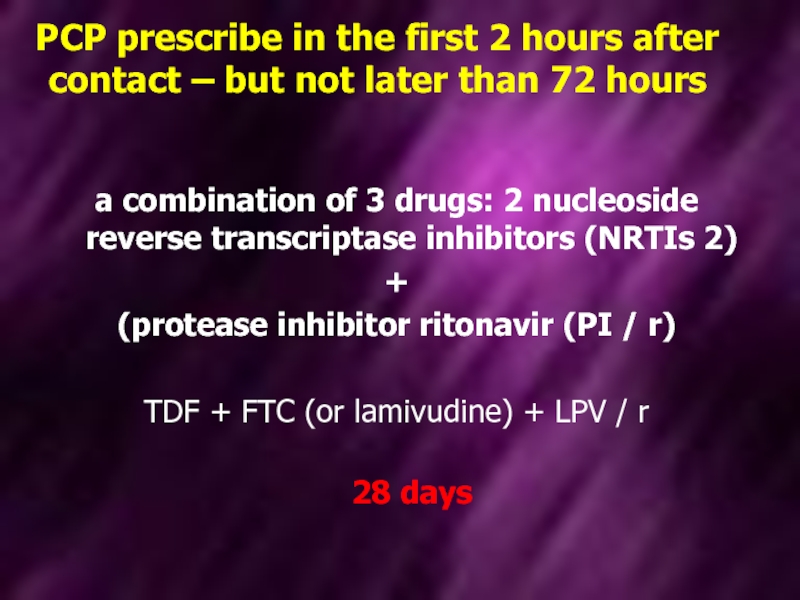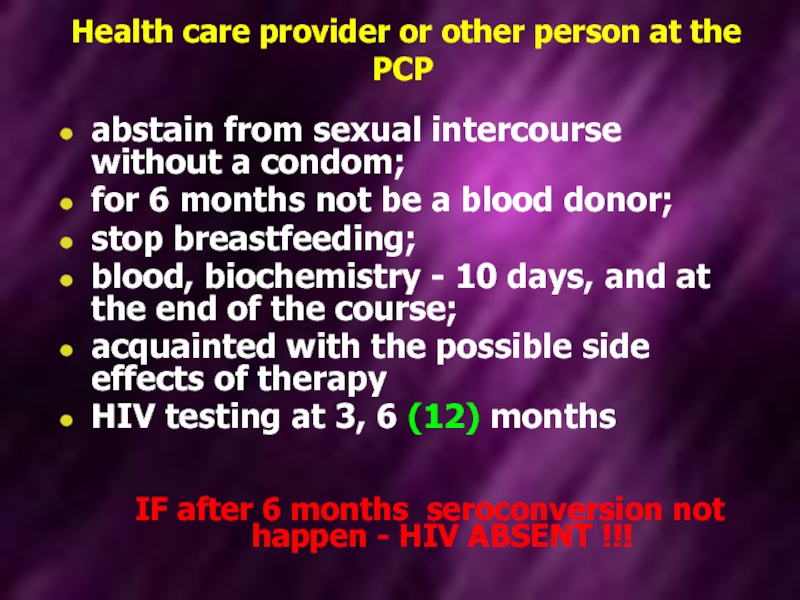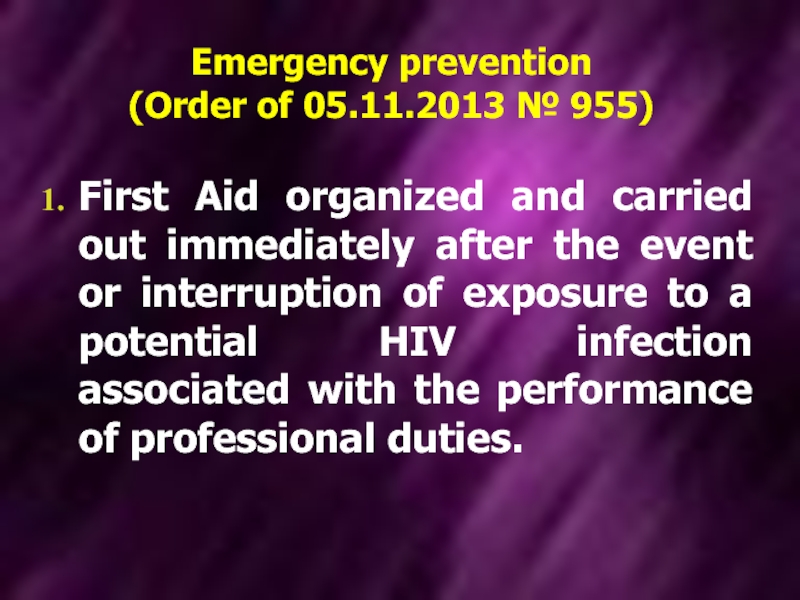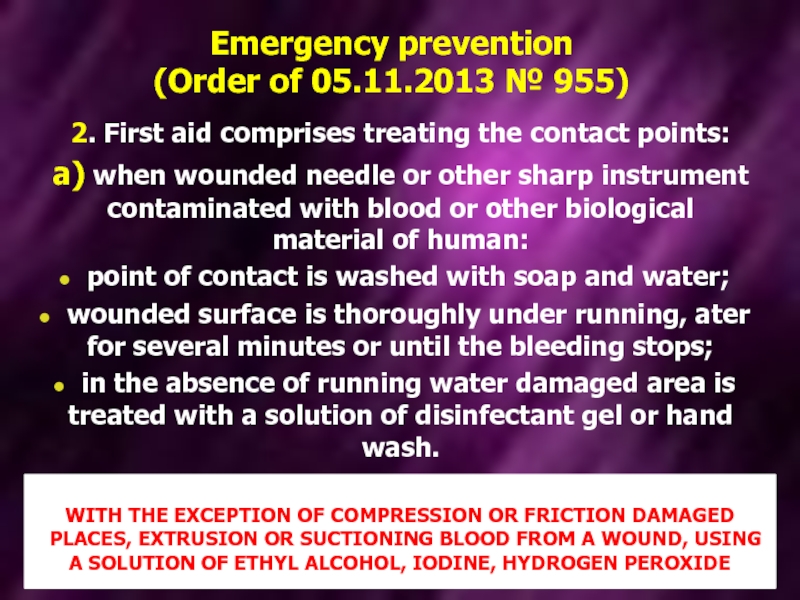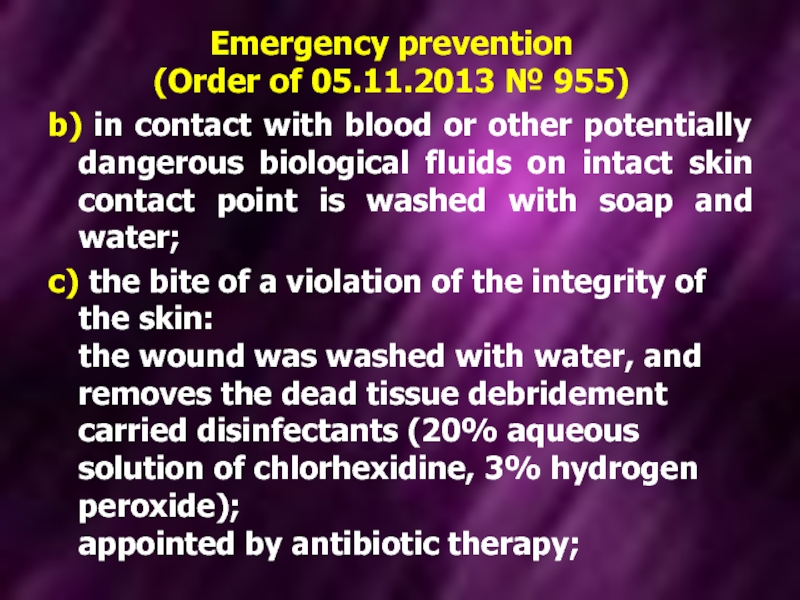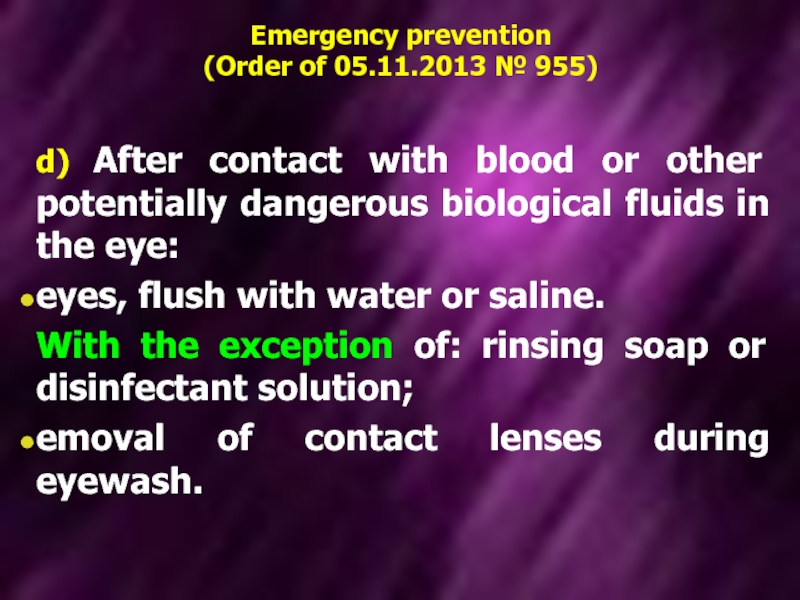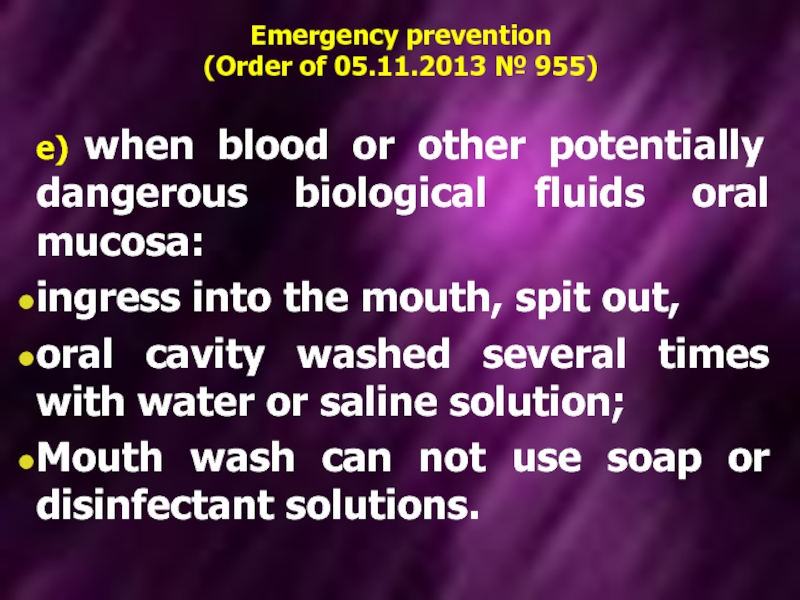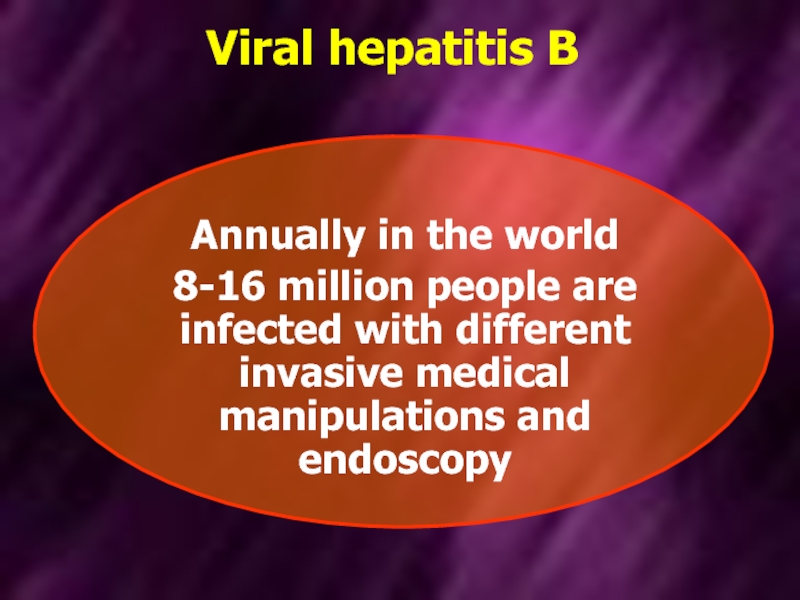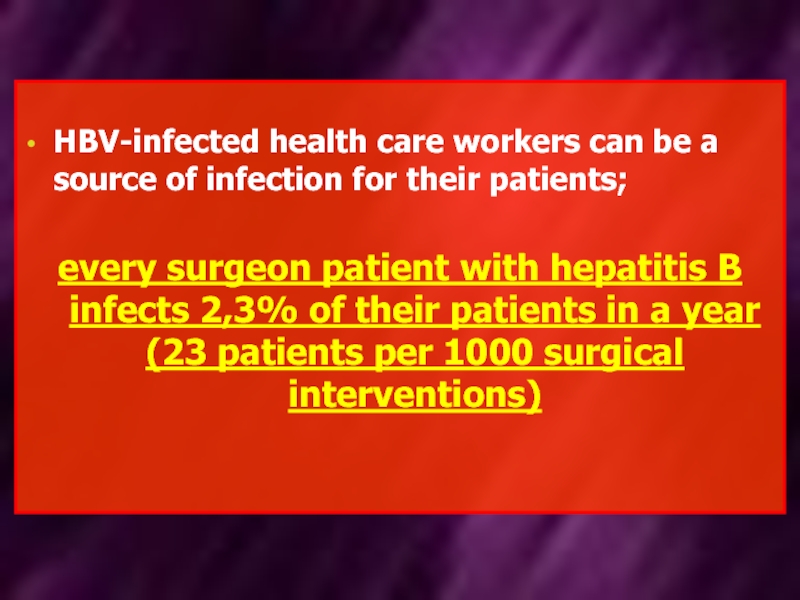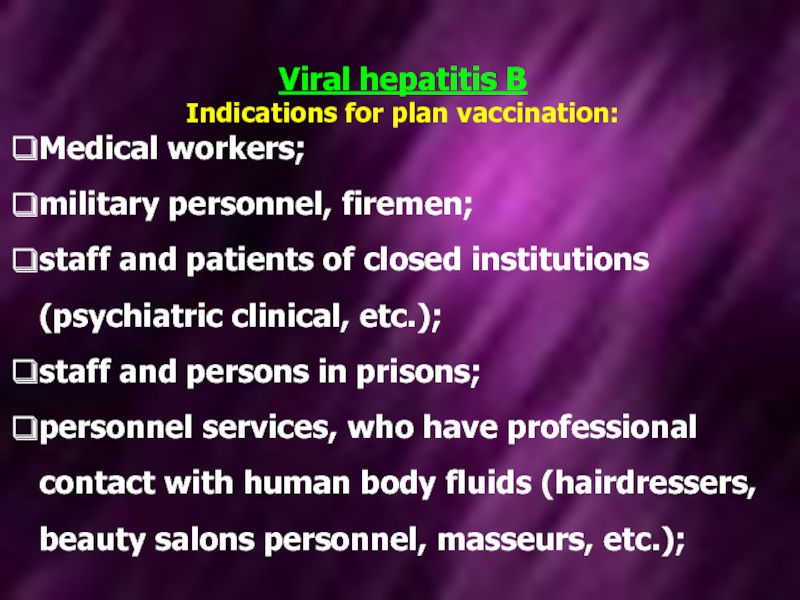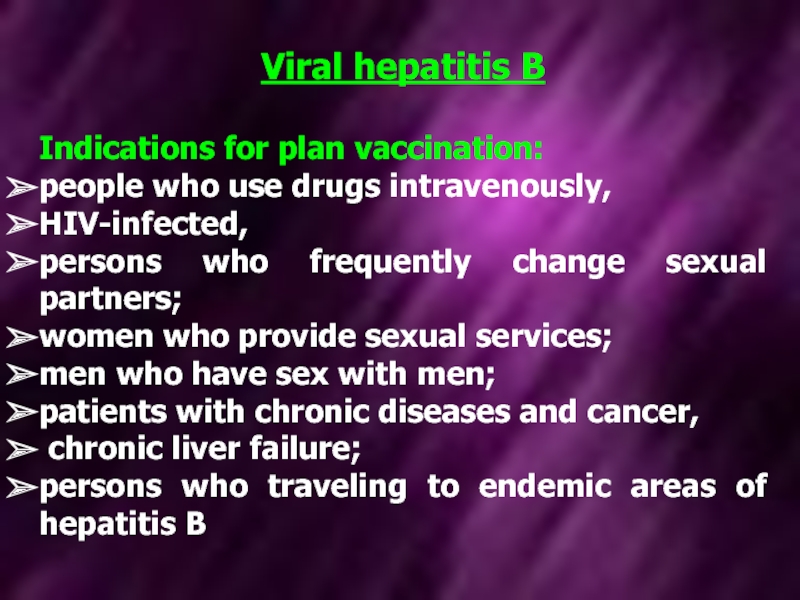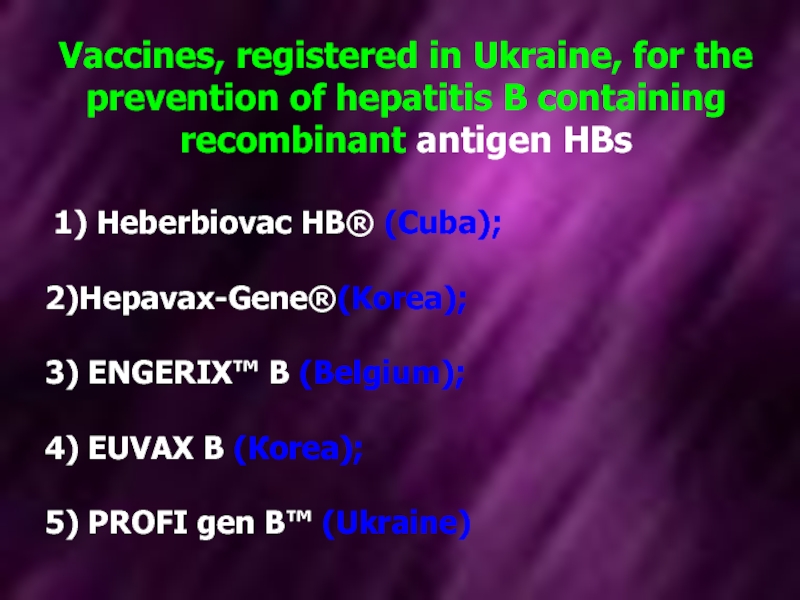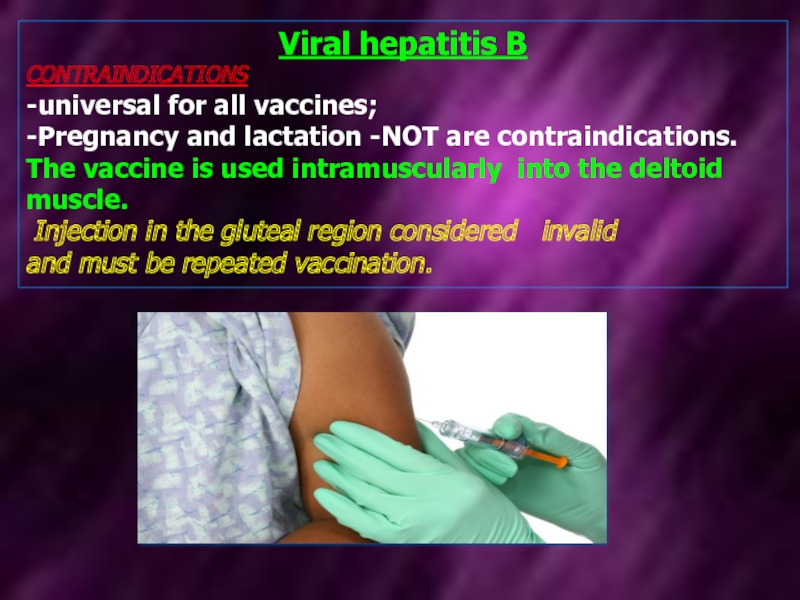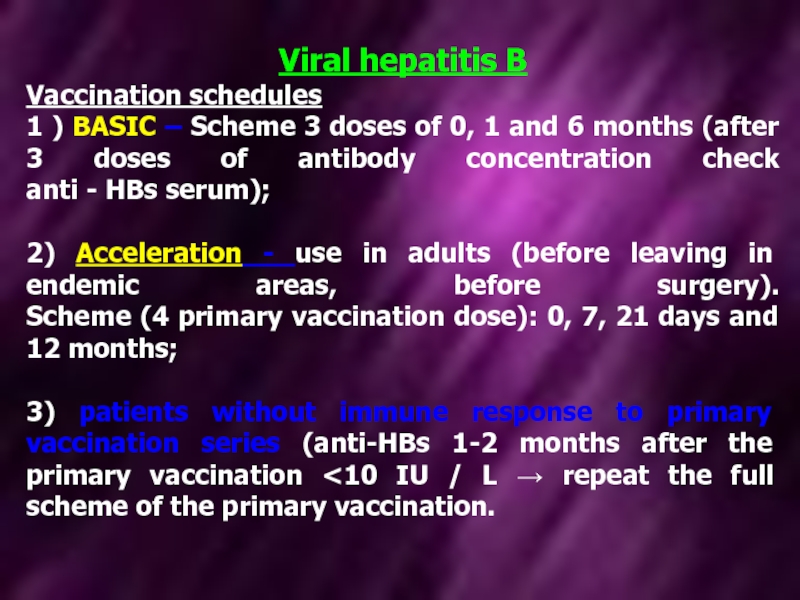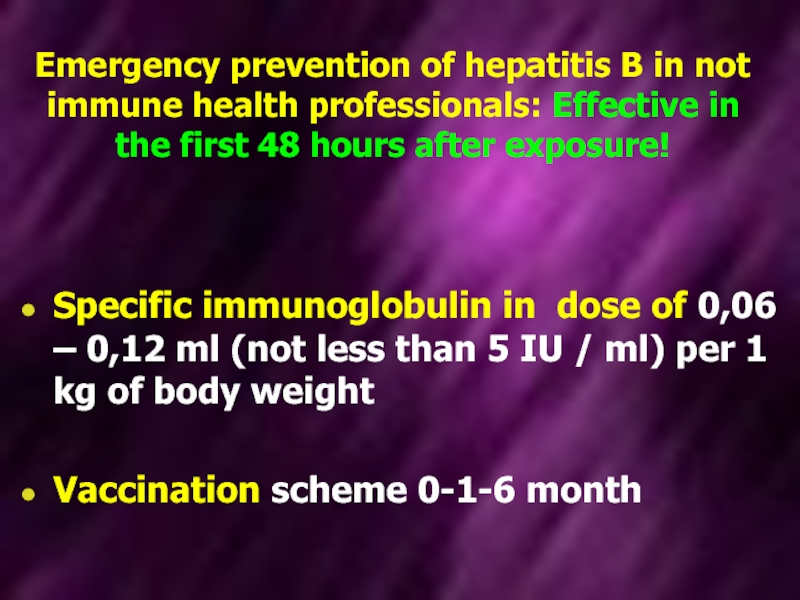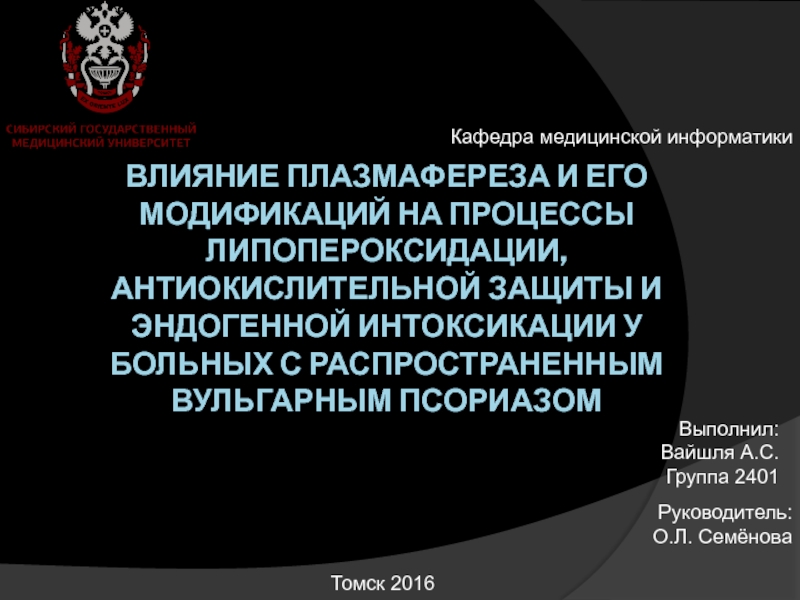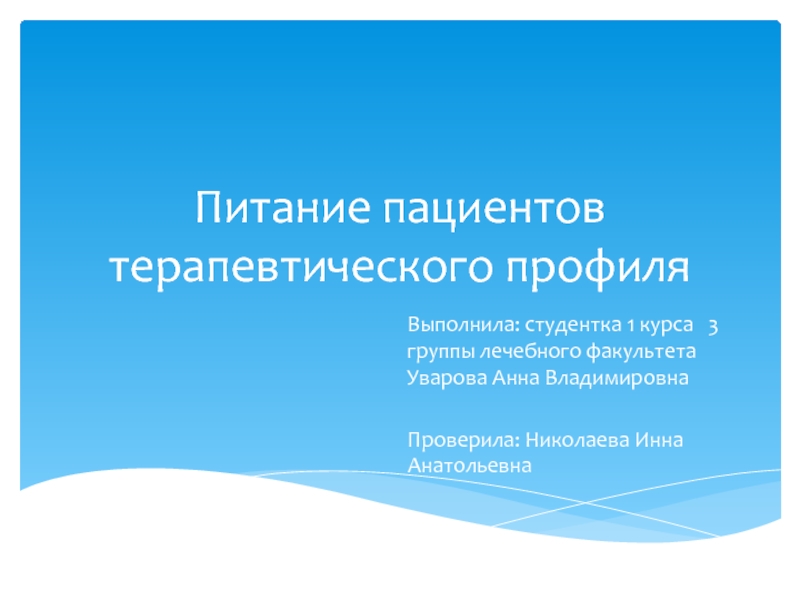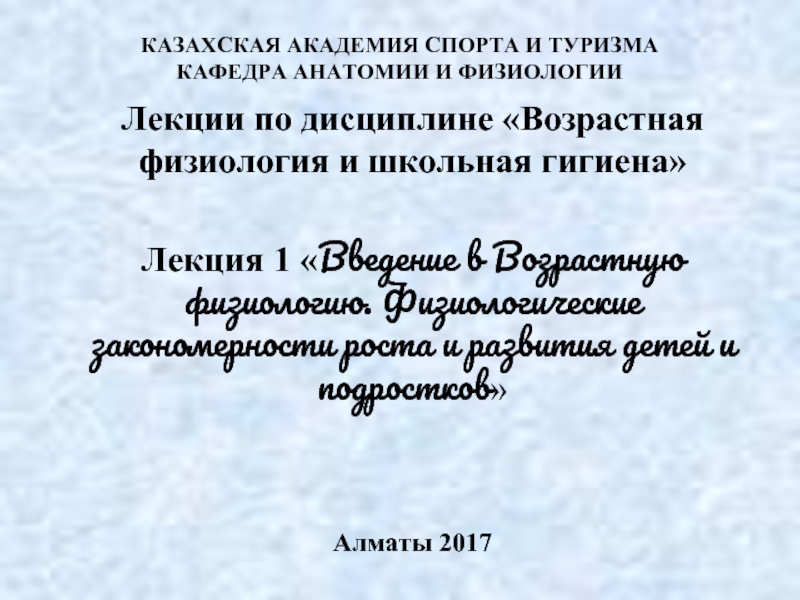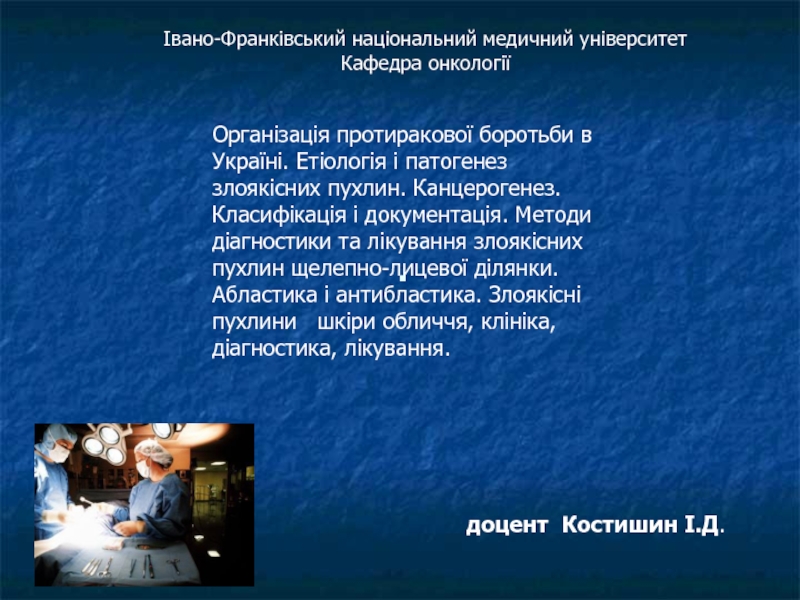- Главная
- Разное
- Дизайн
- Бизнес и предпринимательство
- Аналитика
- Образование
- Развлечения
- Красота и здоровье
- Финансы
- Государство
- Путешествия
- Спорт
- Недвижимость
- Армия
- Графика
- Культурология
- Еда и кулинария
- Лингвистика
- Английский язык
- Астрономия
- Алгебра
- Биология
- География
- Детские презентации
- Информатика
- История
- Литература
- Маркетинг
- Математика
- Медицина
- Менеджмент
- Музыка
- МХК
- Немецкий язык
- ОБЖ
- Обществознание
- Окружающий мир
- Педагогика
- Русский язык
- Технология
- Физика
- Философия
- Химия
- Шаблоны, картинки для презентаций
- Экология
- Экономика
- Юриспруденция
Hospital (nosocomial) infections презентация
Содержание
- 1. Hospital (nosocomial) infections
- 2. Plan 1. The concept of hospital infections
- 3. infectious disease resulting from: Patients infected
- 4. By nosocomial infections DOES NOT
- 5. Causative agents of nosocomial infections Gram-negative aerobes
- 6. Preventive measures for the prevention of introduction
- 7. CHARACTERISTICS OF HOSPITAL bacterial pathogens are resistant
- 8. CHARACTERISTICS OF HOSPITAL bacterial pathogens have multidrug-resistant
- 9. Increased incidence of nosocomial infections due to
- 10. Increased incidence of nosocomial infections due to
- 11. Respiratory secretions from medical staff and surgical
- 12. In the structure of hospital infections
- 13. Classification of nosocomial pneumonia occurs within
- 14. Ventilator-associated pneumonia - occurs within 48 hours
- 15. factors associated with the state of the
- 16. factors that contribute to reflux and
- 17. Empirical antibiotic therapy patients early GP
- 18. In health care, the conditions for the
- 19. Control measures to prevent infection with hepatitis
- 20. HIV infection any damage of skin,
- 21. Nature of the medical exposure has a
- 22. Conducting post-exposure prophylaxis (PEP) Order from 05.11.2013
- 23. Damage to the skin with a sharp
- 24. Steps in case of contact If
- 25. PCP prescribe in the first 2
- 26. Health care provider or other
- 27. Emergency prevention (Order of 05.11.2013 № 955)
- 28. Emergency prevention (Order of 05.11.2013 № 955)
- 29. Emergency prevention (Order of 05.11.2013 № 955)
- 30. Emergency prevention (Order of 05.11.2013 № 955)
- 31. Emergency prevention (Order of 05.11.2013 № 955)
- 32. Viral hepatitis B Annually in the
- 33. HBV-infected health care workers can be
- 34. Viral hepatitis В Indications for plan vaccination:
- 35. Viral hepatitis В Indications for plan
- 36. Vaccines, registered in Ukraine, for the prevention
- 37. Viral hepatitis В CONTRAINDICATIONS -universal for all
- 38. Viral hepatitis В Vaccination schedules 1 )
- 39. Emergency prevention of hepatitis B in not
Слайд 1HOSPITAL (nosocomial)
INFECTIONS
Assistant the department of infectious diseases
k.med.s. Furyk Elena Alexandrovna
Zaporozhye State
Слайд 2Plan
1. The concept of hospital infections
2. Pathogens of nosocomial infections
3 The
Слайд 3infectious disease resulting from:
Patients infected in hospital;
infection of medical personnel, who
HOSPITAL INFECTIONS
Слайд 4By nosocomial infections
DOES NOT include:
case of patient in
cases of intranatal infection and infection of the newborn during the passage through the birth canal.
Слайд 5Causative agents of nosocomial infections
Gram-negative aerobes (Klebsiella, Pseudomonas aeruginosa, Salmonella, Enterobacter);
Gram-positive
Viruses (hepatitis B and C, HIV);
Hospital epidemic process differs from anhospital and depends on characteristics of pathogen population, contingent features of hospitalized patients, and conditions under which this epidemic process developing
Protozoa, fungi.
Слайд 6Preventive measures for the prevention of introduction of community-acquired pathogens in
For hospitalization is necessary to check in history the earlier infectious diseases, leaving a stable and long-lasting immunity (measles, chicken pox, mumps and others);
vaccination history;
check contact with infectious patients in residence or study for a maximum incubation period .
Слайд 7CHARACTERISTICS
OF HOSPITAL bacterial pathogens
are resistant to adverse environmental factors: UV rays,
some bacteria not only themselves possess resistance plasmids, but may transmit resistance factors other bacteria (hospital strains of Pseudomonas aeruginosa resistance transmit to salmonella and Neisseria)
Слайд 8CHARACTERISTICS
OF HOSPITAL bacterial pathogens
have multidrug-resistant to antibiotics (hospital strains of Klebsiella
possess high virulence.
Enough to infect a smaller dose than for community-acquired strains
Слайд 9Increased incidence of nosocomial infections due to conditions in which developing
the establishment of large well-equipped diagnostic devices general hospitals
many instrumental intervention, invasive diagnostic and therapeutic procedures
Слайд 10Increased incidence of nosocomial infections due to conditions in which developing
using a large number of drugs (antibiotics - which leads to the development of dysbiosis; immunodepressants, cytostatics - which leads to the development of immunodeficiency), which reduces the resistance of the organism to infectious diseases
Lack of supervising the epidemiological measures (disinfection, sterilization)
Слайд 11Respiratory secretions from medical staff and surgical departments S. aureus Pseudomonas
The main route of transmission of hospital strains of Salmonella is contact-household. Transfer factors are the hands of medical staff (including medical staff if there are patients or carriers).
In-hospital except natural routes of transmission, connect additional ways and factors of transmission
Слайд 12 In the structure of hospital infections accounted for 15% of hospital
Nosocomial pneumonia - a disease characterized by the appearance on the radiograph new focal-infiltrative changes in the lungs after 48 hours or more after admission in combination with clinical symptoms, with the exclusion of infections that are in the incubation period at the time of admission to the hospital.
Слайд 13Classification of nosocomial pneumonia
occurs within 5 days from the time of
Str. Pneumoniae
H. influenzae
S. aureus methicillin sensitivity
early
develops not earlier than 6 days of hospitalization and due hospital microflora
Pseud. aeruginosa
Acinetobacter spp.
S. aureus methicillin resistant
later
Слайд 14Ventilator-associated pneumonia - occurs within 48 hours after the start of
occurs within 5 days from the time the ventilator
Str. pneumoniae
H. influenzae
S. aureus sensivity
Other representatives normal microflora of the oral cavity
early
developed after 5 days of mechanical ventilation and due hospital microflora
Pseud. aeruginosa
Acinetobacter spp.
S. aureus resistant
later
Слайд 15factors associated with the state of the microorganism (age, the severity
Factors that increase the risk of colonization of the oropharynx and stomach pathogens of nosocomial pneumonia
Factors of nosocomial pneumonia
Слайд 16
factors that contribute to reflux and aspiration (mechanical ventilation, tracheostomy, a
Factors that impede the normal expectoration (intubation, use of morphine preparations, immobilization).
Factors of nosocomial pneumonia
Слайд 17 Empirical antibiotic therapy patients early GP without the presence of risk
Слайд 18In health care, the conditions for the implementation of parenteral transmission
Apply a variety of medical instruments and devices, including bronchoscopy, cystoscopy, reliable sterilization which is difficult
Transfusion of blood and blood components
Слайд 19Control measures to prevent infection with hepatitis viruses B and C,
Early detection cases of the disease in patients;
Control of donated blood and blood products;
Use disposable instruments for parenteral manipulations;
Careful sterilization apparatus and instruments reusable.
Use of gloves during any parenteral manipulations.
Слайд 20HIV infection
any damage of skin, mucous membranes nurses, pollution of their
Слайд 21Nature of the medical exposure has a different probability of infection
after contact wounds with HIV-infected blood likelihood of HIV infection is 0,3%.
after being hit by HIV-infected blood on intact mucous membranes of the probability of HIV infection is 0,09%.
intact skin after exposure to HIV-infected blood or other body fluids, the likelihood of HIV infection is not installed.
Слайд 22Conducting post-exposure prophylaxis (PEP) Order from 05.11.2013 № 955
- A
Слайд 23Damage to the skin with a sharp object contaminated with blood,
Bite caused HIV-infected patient who has a visible source of bleeding in the mouth;
Contact with the blood, fluid with blood or other potentially infectious materials to mucous membranes of the mouth, nose and eyes;
Contact with blood, fluids with visible admixture of blood or other potentially infectious materials on damaged skin ( open wounds, abrasions, chapped or affected areas)
Indications for PEP
(Order of 05.11.2013 № 955)
Слайд 24Steps in case of contact
If patient's HIV status is negative-
If HIV - status of patient check impossible, it is considered to HIV - positive and the PCP is appointed.
If the status of the health worker is HIV-positive - meaning the infection occurred before, and the PCP is not assigned.
If health worker HIV - negative status, and at the source (the patient) assigned a positive 4-week course of preventive treatment.
Слайд 25 PCP prescribe in the first 2 hours after contact – but
a combination of 3 drugs: 2 nucleoside reverse transcriptase inhibitors (NRTIs 2)
+
(protease inhibitor ritonavir (PI / r)
TDF + FTC (or lamivudine) + LPV / r
28 days
Слайд 26
Health care provider or other person at the PCP
abstain from
for 6 months not be a blood donor;
stop breastfeeding;
blood, biochemistry - 10 days, and at the end of the course;
acquainted with the possible side effects of therapy
HIV testing at 3, 6 (12) months
IF after 6 months seroconversion not happen - HIV ABSENT !!!
Слайд 27Emergency prevention
(Order of 05.11.2013 № 955)
First Aid organized and carried out
Слайд 28Emergency prevention
(Order of 05.11.2013 № 955)
2. First aid comprises treating the
а) when wounded needle or other sharp instrument contaminated with blood or other biological material of human:
point of contact is washed with soap and water;
wounded surface is thoroughly under running, ater for several minutes or until the bleeding stops;
in the absence of running water damaged area is treated with a solution of disinfectant gel or hand wash.
WITH THE EXCEPTION OF COMPRESSION OR FRICTION DAMAGED
PLACES, EXTRUSION OR SUCTIONING BLOOD FROM A WOUND, USING A SOLUTION OF ETHYL ALCOHOL, IODINE, HYDROGEN PEROXIDE
Слайд 29Emergency prevention
(Order of 05.11.2013 № 955)
b) in contact with blood
c) the bite of a violation of the integrity of the skin: the wound was washed with water, and removes the dead tissue debridement carried disinfectants (20% aqueous solution of chlorhexidine, 3% hydrogen peroxide); appointed by antibiotic therapy;
Слайд 30Emergency prevention
(Order of 05.11.2013 № 955)
d) After contact with blood or
eyes, flush with water or saline.
With the exception of: rinsing soap or disinfectant solution;
emoval of contact lenses during eyewash.
Слайд 31Emergency prevention
(Order of 05.11.2013 № 955)
e) when blood or other potentially
ingress into the mouth, spit out,
oral cavity washed several times with water or saline solution;
Mouth wash can not use soap or disinfectant solutions.
Слайд 32Viral hepatitis B
Annually in the world
8-16 million people are infected
Слайд 33
HBV-infected health care workers can be a source of infection for
every surgeon patient with hepatitis B infects 2,3% of their patients in a year (23 patients per 1000 surgical interventions)
Слайд 34Viral hepatitis В
Indications for plan vaccination:
Medical workers;
military personnel, firemen;
staff and
staff and persons in prisons;
personnel services, who have professional contact with human body fluids (hairdressers, beauty salons personnel, masseurs, etc.);
Слайд 35Viral hepatitis В
Indications for plan vaccination:
people who use drugs intravenously,
HIV-infected,
persons
women who provide sexual services;
men who have sex with men;
patients with chronic diseases and cancer,
chronic liver failure;
persons who traveling to endemic areas of hepatitis B
Слайд 36Vaccines, registered in Ukraine, for the prevention of hepatitis B containing
1) Heberbiovac HB® (Cuba);
2)Hepavax-Gene®(Korea); 3) ENGERIX™ B (Belgium);
4) EUVAX B (Коrea);
5) PROFI gen B™ (Ukraine)
Слайд 37Viral hepatitis В
CONTRAINDICATIONS
-universal for all vaccines;
-Pregnancy and lactation -NOT are contraindications.
The
Injection in the gluteal region considered invalid and must be repeated vaccination.
Слайд 38Viral hepatitis В
Vaccination schedules
1 ) BASIC – Scheme 3 doses of
2) Acceleration - use in adults (before leaving in endemic areas, before surgery). Scheme (4 primary vaccination dose): 0, 7, 21 days and 12 months;
3) patients without immune response to primary vaccination series (anti-HBs 1-2 months after the primary vaccination <10 IU / L → repeat the full scheme of the primary vaccination.
Слайд 39Emergency prevention of hepatitis B in not immune health professionals: Effective
Specific immunoglobulin in dose of 0,06 – 0,12 ml (not less than 5 IU / ml) per 1 kg of body weight
Vaccination scheme 0-1-6 month
